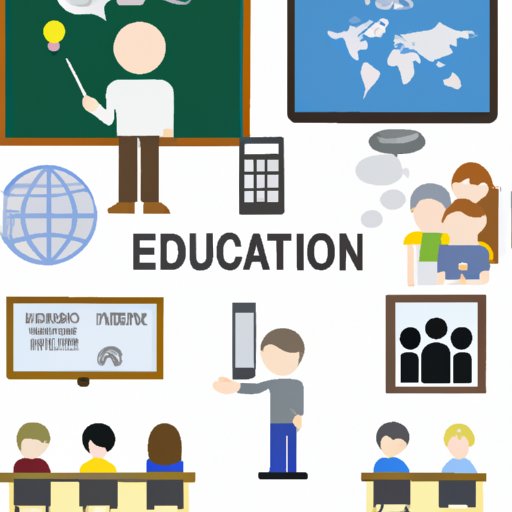Introduction
Technology has become an integral part of our lives and its presence in the classroom is no different. Schools are increasingly investing in technology to improve the learning experience of their students, from providing access to educational resources to enhancing communication with teachers and peers. But what exactly are the benefits of technology in the classroom, and how can it help students excel? In this article, we explore these questions and more.
Exploring the Benefits of Technology in the Classroom
Technology has revolutionized education, offering numerous benefits for students. Let’s take a closer look at some of the ways technology can be used to enhance the learning experience.
Increasing Access to Educational Resources
One of the key benefits of technology in the classroom is that it provides students with greater access to educational resources. With the advent of the internet, students can now access a wealth of information on any subject they need. Here are a few examples of how technology can be used to increase access to educational resources:
Online Learning Platforms
Online learning platforms such as Coursera and Khan Academy offer courses on a range of topics, allowing students to learn at their own pace. These platforms also provide interactive exercises and quizzes to test understanding, making learning more engaging and effective.
Access to Digital Textbooks and Other Resources
Digital textbooks are becoming increasingly popular in classrooms, as they provide students with instant access to up-to-date content. They are often cheaper than traditional textbooks and can be accessed from anywhere, making them ideal for remote learning. Additionally, there are many other online resources available to students, including videos, podcasts, articles, and research papers.
Improving Student Engagement
Technology can also be used to improve student engagement in the classroom. By using interactive activities, real-time feedback, and other engaging tools, teachers can keep their students engaged and motivated during lessons.
Interactive Learning Activities
Interactive learning activities such as simulations, virtual field trips, and augmented reality apps can make lessons more interesting and engaging. These activities can also help students retain information better, as they are more likely to remember something if they have experienced it firsthand.
Real-Time Feedback
Technology can also be used to provide students with real-time feedback on their work. This can help them identify their strengths and weaknesses and understand how to improve. For instance, some software programs can analyze student essays and offer suggestions on how to improve them.
Enhancing Collaboration and Teamwork
Technology can also be used to facilitate collaboration and teamwork among students. With the right tools, students can work together on projects or discuss ideas in real-time, even if they are not in the same room.
Group Projects and Discussions
Group projects and discussions are a great way to encourage collaboration between students. Online tools such as Google Docs and Zoom allow students to work together on projects and discuss ideas in real-time, regardless of their location.
Remote Learning Opportunities
Technology also enables students to participate in remote learning opportunities. For instance, they can attend lectures or seminars hosted by experts from around the world, without having to leave the comfort of their home.
Facilitating Communication with Teachers and Peers
Finally, technology can be used to facilitate communication between students and teachers. It can also be used to enable students to stay connected with each other, even when they are learning remotely.
Virtual Meetings and Discussions
Video conferencing tools such as Zoom and Skype can be used to host virtual meetings and discussions. This allows students to communicate with their teachers and peers in real-time, regardless of their location.
Easier Access to Teacher Support
Technology also makes it easier for students to get help from their teachers. For instance, they can use email or messaging apps to ask questions or seek clarification on topics they don’t understand.
Conclusion
In conclusion, technology can play a vital role in improving the learning experience of students. From increasing access to educational resources to enhancing collaboration and teamwork, technology offers numerous benefits for students. It can also be used to facilitate communication between students and teachers, enabling them to stay connected and get the support they need. Therefore, it is important for students to make use of technology to maximize their learning potential.
(Note: Is this article not meeting your expectations? Do you have knowledge or insights to share? Unlock new opportunities and expand your reach by joining our authors team. Click Registration to join us and share your expertise with our readers.)
